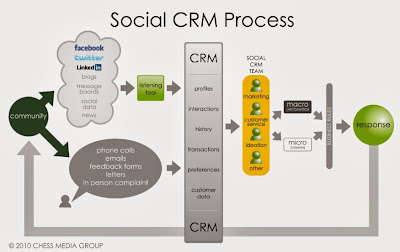The greatest challenge of our “social age” isn’t to grow the largest fan or follower base. Neither is it to achieve the greatest reach or “virality” in one’s digital campaign.
Rather, the challenge is this – how can we transform fans and followers on social networks into actual money paying customers?
While Facebook, Twitter and YouTube have found ways to monetise their platforms, many are still figuring out ways to connect the social web with the corporate wallet.
Enter “The Social Customer: How Brands Can Use Social CRM to Acquire, Monetize, and Retain Fans, Friends, and Followers” by Adam Metz. Covering a wide range of topics on social Customer Relationship Management (CRM), this ambitious book spans a wide spectrum of social business topics. They range from customer insights, marketing, sales, analytics, demand management, support, and customer experience, to mobile and location based services.
To understand what Social CRM is, let us first consider this definition by Metz:
The customer owns the conversation now, so companies need to change the way they do business. Social CRM is a philosophy and a business strategy that uses technology, work flow, business rules, and social information to talk with (not at) the customer in a transparent way, to make value for both parties.
In order to make their brands “social objects” (stuff which people want to talk about), companies can consider the six foundational premises of Social CRM articulated by Paul Greenberg. These state that companies should make themselves likable, help customers control their lives, help customers fulfill their agendas, and be non-obtrusive and valuable while providing memorable experiences.
According to Metz, the Social CRM process is fairly involved. It covers community management, listening on social channels, mining of one’s customer database, establishment of a social CRM team, and the invoking of either macro responses (automated activities like birthday coupons) or micro responses (manual interventions like organising a press briefing). These activities can be visualized by Chess Media’s chart below:
 Courtesy of Chess Media Group
Courtesy of Chess Media Group
From the basics, Metz goes on to describe the 23 Use Cases of Social CRM. Covering social customer insights, marketing, sales, service/support, innovation, collaboration, and customer experience, the use cases illustrates examples of companies doing them, market and technology maturity levels, and recommended vendors.
You can see how these concepts are categorised in the chart by Altimeter Group and Metz Consulting below:
 Courtesy of The Social Concept
Courtesy of The Social Concept
From the Use Cases, the book proposes that a Social CRM methodology could be adopted. Represented by the acronym lPOSTm, the steps involved are…
l = Listening to what your customers are saying
P = People and your relationships with them
O = Objectives, ie what your brand wants to do
S = Strategy, the stuff that the book teaches
T = Tools, the myriad platforms and software needed
m = Measurement, a necessary evil
To make one’s social CRM strategy come alive, the book proposes the following key ideas:
1) Adopt a strategy canvas approach (ala Blue Ocean Strategy) to differentiate your business from the “red oceans” of competitors. Here you should consider the Four Actions Framework, namely to eliminate factors your industry take for granted, raise factors of social customer management above industry norms, reduce areas that are less valuable to social customers, and create new factors of value.
2) Avoid confusing Social CRM with its disparate components like database marketing, IT systems, loyalty programmes, social media platforms, or marketing and PR alone.
3) Create a holistic way of measuring your Social CRM activities through dashboards monitoring KPIs such as the following:
a) Net Promoter Scores (ie how likely are your customers to recommend you to others)
b) Brand Reputation (usually provided by social sentiment firms)
c) Social Collateral Engagement (ie online “buzz” like conversation levels, influence of commenters, sentiment of comments, and qualitative feedback)
d) Social Ecosystem Health (number of members, type of content, traffic, interactions, and response)
e) Social Commerce (sales, reach and group marketing efforts, often by affiliates)
4) Crafting detailed workflows and escalation paths. These necessitate the integration of Social CRM systems with Enterprise Resource Planning (ERP) and Supply Chain Management (SCM) systems to provide seamless end-to-end service to customers and partners.
5) Embracing social advertising and retail, as well as the exciting opportunities offered by mobile and geo-location technologies.
In a nutshell, “The Social Customer” provides a comprehensive guide to the exciting world of social CRM and social commerce. Unfortunately, the book does get into the problem of trying to tackle too many topics under its cover. At times, I found it difficult to visualize how the various multiple systems look like and had to stop to think hard to imagine how A connected to B and C.
Having said that, Metz does provide lots of useful links and references throughout the volume. He is also fairly generous in giving credit to many of his contemporaries while citing and modifying their ideas. As such, “The Social Customer“ becomes a useful springboard for one to venture more deeply into the world of Social CRM.








